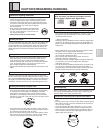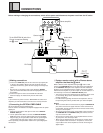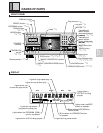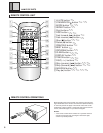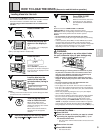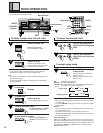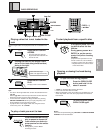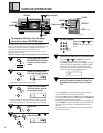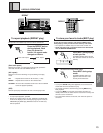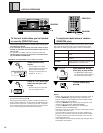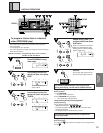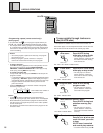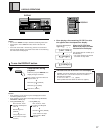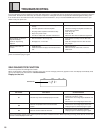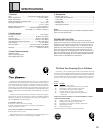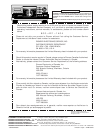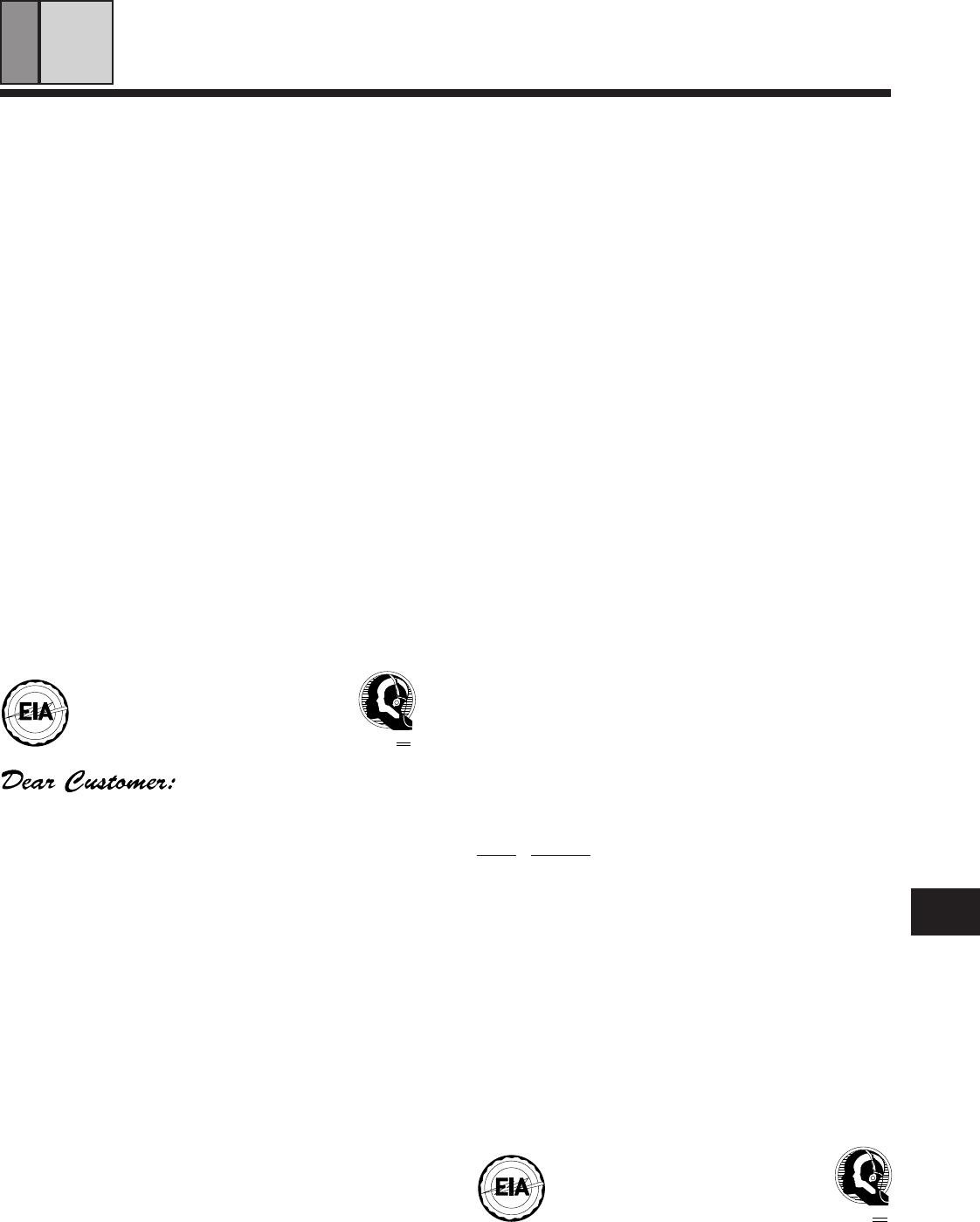
19
VARIOUS
OPERATIONS
BASIC
OPERATIONS
BEFORE
OPERATING
SPECIFICATIONS
4. Accessories
• Remote control unit ................................................................... 1
• Size AA/R6P dry cell batteries ................................................... 2
• Audio cable ................................................................................ 1
• Control cable.............................................................................. 1
• Warranty card ............................................................................ 1
• Operating instructions ............................................................... 1
Note!!
Specifications and design subject to possible modification without
notice, due to improvements.
POWER-CORD CAUTION
Handle the power cord by the plug. Do not pull out the plug by
tugging the cord and never touch the power cord when your hands
are wet as this could cause a short circuit or an electric shock. Do
not place the unit, a piece of furniture, etc., on the power cord, or
pinch the cord. Never make a knot in the cord or tie it with other
cords. The power cords should be routed such that they are not
likely to be stepped on. A damaged power cord can cause a fire or
give you an electrical shock. Check the power cord once in a while.
When you find it damaged, ask your nearest PIONEER authorized
service center or your dealer for a replacement.
1. General
Type ...........................................Compact disc digital audio system
Power requirements ............................................... AC 120V, 60 Hz
Power consumption ................................................................. 12 W
Power consumption in standby mode .......................................1 W
Operating temperature .............................................. +5°C – +35°C
(+41°F – +95°F)
Weight ( without package ) ................................. 7.5 kg (16 lb 9 oz.)
External dimensions .........................420(W) X 433(D) X 193(H) mm
(16-9/16(W) X 17-1/16(D) X 7-5/8(H) in.)
2. Audio section
Frequency response ................................................... 2 Hz - 20 kHz
S/N ratio .......................................................... 98 dB or more (EIAJ)
Dynamic range ................................................ 96 dB or more (EIAJ)
Harmonic distortion .......................................0.003 % or less (EIAJ)
Level difference between channels ................. 1.0 dB or less (EIAJ)
Output voltage ........................................................... 2 Vrms (EIAJ)
Wow and flutter ............................... less than ±0.001 % (W.PEAK)
( below measurable level ) (EIAJ)
Channels ............................................................2-channel ( stereo )
3. Input/Output terminal
Audio line output
Control input/output jacks
Optical digital output jack
•
A
S
S
O
C
I
A
T
I
O
N
•
E
L
E
C
T
R
O
N
I
C
I
N
D
U
S
T
R
I
E
S
EST 1924
We
Want You
LISTENING
For A Lifetime
Selecting fine audio equipment such as the unit you’ve just purchased is
only the start of your musical enjoyment. Now it’s time to consider how you
can maximize the fun and excitement your equipment offers. This manufac-
turer and the Electronic Industries Association’s Consumer Electronics
Group want you to get the most out of your equipment by playing it at a safe
level. One that lets the sound come through loud and clear without annoying
blaring or distortion-and, most importantly, without affecting your sensitive
hearing.
Sound can be deceiving. Over time your hearing “comfort level” adapts to
higher volumes of sound. So what sounds “normal” can actually be loud and
harmful to your hearing. Guard against this by setting your equipment at a
safe level BEFORE your hearing adapts.
To establish a safe level:
÷ Start your volume control at a low setting.
÷ Slowly increase the sound until you can hear it comfortably and
clearly, and without distortion.
Once you have established a comfortable sound level:
÷ Set the dial and leave it there.
Taking a minute to do this now will help to prevent hearing damage or loss
in the future. After all, we want you listening for a lifetime.
We Want You Listening For A Lifetime
Used wisely, your new sound equipment will provide a lifetime of fun and
enjoyment. Since hearing damage from loud noise is often undetectable until
it is too late, this manufacturer and the Electronic Industries Association’s
Consumer Electronics Group recommend you avoid prolonged exposure to
excessive noise. This list of sound levels is included for your protection.
Information courtesy of the Deafness Research Foundation.
90 Subway, motorcycle, truck traffic, lawn mower
100 Garbage truck, chain saw, pneumatic drill
120 Rock band concert in front of speakers, thunderclap
140 Gunshot blast, jet plane
180 Rocket launching pad
THE FOLLOWING NOISES CAN BE DANGEROUS UNDER
CONSTANT EXPOSURE
30 Quiet library, soft whispers
40 Living room, refrigerator, bedroom away from traffic
50 Light traffic, normal conversation, quiet office
60 Air conditioner at 20 feet, sewing machine
70 Vacuum cleaner, hair dryer, noisy restaurant
80 Average city traffic, garbage disposals, alarm clock
at two feet.
Decibel
Level Example
•
A
S
S
O
C
I
A
T
I
O
N
•
E
L
E
C
T
R
O
N
I
C
I
N
D
U
S
T
R
I
E
S
EST 1924
We
Want You
LISTENING
For A Lifetime



